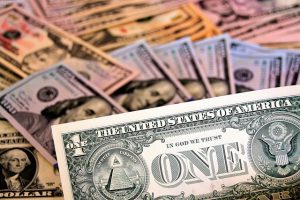The Federal Reserve and Its Ineffectiveness
Oct 31, 2023
The Federal Reserve, commonly known as the “Fed,” is the central banking system of the United States. It was established in 1913 to promote a stable financial system and regulate monetary policy. However, economists have expressed growing concerns regarding the effectiveness of the Fed’s efforts. Despite its endeavours to control inflation and stimulate economic growth, the US economy grapples with long-standing structural challenges, including wealth inequality and insufficient investment in public infrastructure.
These persistent issues have raised questions about the extent to which the Fed’s policies have been able to address the underlying problems. While the Fed plays a crucial role in shaping monetary conditions and maintaining stability, it operates within a complex economic landscape influenced by various factors beyond its control.
It is essential to recognize that the Fed’s mandate extends beyond addressing wealth inequality and public infrastructure investment. Its primary focus lies in maintaining price stability, promoting maximum employment, and ensuring the stability of the financial system. However, the interconnected nature of economic challenges necessitates a comprehensive approach involving various stakeholders, including government bodies, policymakers, and private sector entities.
Efforts to address wealth inequality and enhance public infrastructure investment require a multifaceted approach that extends beyond the purview of the Fed alone. Collaborative efforts involving fiscal policies, targeted government interventions, and public-private partnerships are essential to tackle these systemic issues effectively.
The Fed’s Negative Impact on the US Economy
The Federal Reserve, commonly known as the “Fed,” is the central banking system of the United States. Established in 1913, its primary objectives are to promote a stable financial system and regulate monetary policy. However, there have been concerns raised about the impact of the Fed’s actions on the US economy.
Critics argue that the Fed’s low-interest-rate policies have contributed to a culture of debt and easy credit, which in turn has encouraged risky investments and played a role in the 2008 financial crisis. Additionally, the Fed’s quantitative easing policies, aimed at stimulating the economy, have been accused of inflating asset prices, disproportionately benefiting the wealthy while leaving the middle and lower classes behind.
It is important to note that these criticisms are part of an ongoing debate among economists and policymakers. While some argue that the Fed’s actions have had negative consequences, others believe that the central bank’s interventions were necessary to prevent a deeper economic downturn during challenging times.
Ultimately, the impact of the Fed’s policies on the US economy is a complex and multifaceted issue. It requires carefully analysing various factors, including the broader economic landscape, government fiscal policies, and the interplay between monetary and fiscal measures.
While there are concerns about the Fed’s impact on the US economy, it is crucial to consider the broader context and ongoing discussions surrounding its policies. Evaluating the effectiveness and consequences of the Fed’s actions requires a comprehensive understanding of the complex dynamics in the financial system and the broader economy.
The Fed’s Lack of Accountability
The Federal Reserve’s lack of accountability is a valid concern raised by critics. As an independent entity, the Fed operates with a degree of autonomy from the federal government, which means its policies are not subject to direct democratic scrutiny. This arrangement has led to unelected officials wielding significant power over the US economy without direct oversight from elected officials.
Moreover, the Fed’s decision-making process has been criticized for its lack of transparency and opacity. This has fueled accusations of cronyism and favouritism towards Wall Street banks, as the public has limited visibility into the factors influencing the Fed’s actions.
It is important to note that discussions surrounding the Fed’s accountability are ongoing, with differing perspectives among economists and policymakers. Some argue that the Fed’s independence is necessary to insulate monetary policy from short-term political pressures, allowing for more effective long-term decision-making. Others, however, emphasize greater transparency and accountability to ensure public trust and confidence in the central bank’s actions.
Finding the right balance between independence and accountability is a complex challenge. It requires careful consideration of the potential risks and benefits associated with different levels of oversight and transparency. Fostering a system that promotes the Fed’s independence and accountability is crucial for maintaining public trust in the central bank’s role in shaping the US economy.
The Fed’s Influence on Income Inequality
The Federal Reserve’s influence on income inequality is a topic of concern in the US economy. While the Fed’s primary goal is to promote economic growth and stability, there are arguments that its policies have contributed to exacerbating wealth disparities. One aspect that has drawn criticism is the Fed’s approach of keeping interest rates low and implementing quantitative easing measures, which involves printing money.
Critics argue that these policies have effectively transferred wealth from savers and retirees to wealthy investors and corporations. By keeping interest rates low, the Fed incentivizes borrowing and investment, benefiting those with access to capital and financial markets. This has led to a situation where the rich have seen their wealth grow while the poor and middle-class struggle to keep up with rising living costs.
It is important to note that discussions surrounding the Fed’s impact on income inequality are complex and multifaceted. Economists and policymakers have differing perspectives on the extent to which the Fed’s policies directly contribute to wealth disparities. Structural issues, fiscal policies, and global economic trends also significantly shape income inequality.
Unveiling the Shadowy Side of the Federal Reserve
The Federal Reserve, often hailed as the guardian of the U.S. economy, conceals a darker dimension beneath its veneer of stability and oversight. Critics contend that rather than safeguarding the economy, the Fed operates as a manipulative force, exacerbating disparities between the affluent and the less privileged while preserving its interests and those of the banking sector.
Since its establishment in 1913, the U.S. dollar has witnessed a staggering 96% devaluation due to the Fed’s inflationary monetary policies. This continual devaluation adversely impacts everyday Americans, particularly the poor and the middle class, whose wealth predominantly resides in cash and cash equivalents. Meanwhile, the wealthy can mitigate these effects through strategic investments.
The Federal Reserve has been a key player in manipulating economic cycles, setting the stage for perilous boom-and-bust scenarios. The housing bubble of the early 2000s, fueled by artificially low-interest rates orchestrated by then Fed Chairman Alan Greenspan, stands as a glaring example. This imprudent policy directly contributed to the devastating financial crisis of 2008, resulting in the depletion of savings for millions while the architects of the crisis evaded consequences.
While projecting an image of a public entity acting in the nation’s interest, the Federal Reserve is far from transparent. Operating independently of the government with limited accountability, its quasi-public status is underscored by private institutions’ ownership of its regional Federal Reserve Banks, exposing its true allegiances.
Bank Bailouts: Prioritizing Profit Over People
The 2008 financial crisis laid bare the Federal Reserve’s priorities. As ordinary Americans grappled with job losses and foreclosures, taxpayer money was used to bail out the banks responsible for the crisis. This preferential treatment of banks over people underscored the Fed’s skewed priorities.
Moral Hazard: Rewarding Recklessness
The consistent bailouts extended to financial institutions by the Federal Reserve have fostered a dangerous moral hazard. With the assurance of rescue regardless of their risky behaviour, banks persist in engaging in hazardous activities, posing a threat to the entire economy.
In conclusion, the Federal Reserve, operating under the guise of economic stewardship, perpetuates a system that favours the affluent, penalizes the less privileged, and rewards financial recklessness. This grim reality necessitates heightened scrutiny and increased accountability for this influential institution.
Alternatives to the Federal Reserve
Given the concerns surrounding the Federal Reserve, economists have proposed alternative monetary policies that aim to address the perceived problems. One such proposal is a return to the gold standard, limiting the Fed’s ability to manipulate the money supply and potentially prevent inflation. Advocates argue that tying the currency’s value to a tangible asset like gold could provide stability and reduce the risk of economic imbalances.
Another alternative that has been suggested is the establishment of a public banking system. This system would offer low-cost loans to individuals and small businesses to promote economic growth and reduce income inequality. Proponents believe that a public banking system could provide more equitable access to credit and financial services, potentially levelling the playing field for those historically underserved by traditional banks.
It is important to note that these alternative proposals are not without their drawbacks and complexities. For example, the gold standard has its own challenges, including potential limitations on monetary policy flexibility. Similarly, establishing a public banking system would require careful consideration of regulatory frameworks and potential risks.
While these alternative approaches offer compelling alternatives to the current system of Fed control, further research, analysis, and debate are necessary to understand their potential benefits and drawbacks fully. Exploring alternative monetary policies is an ongoing discussion among economists and policymakers as they seek to address the concerns and challenges associated with the Federal Reserve.
Conclusion
In conclusion, while the Federal Reserve was established with good intentions, there are valid concerns about the negative impact of its actions on the US economy. The Fed’s policies, such as creating a culture of debt and easy credit, have contributed to wealth disparities and left many Americans facing financial challenges. Moving forward, it is important to consider alternative monetary policies prioritising economic stability and reducing income inequality.
Exploring alternative approaches to monetary policy can provide valuable insights and potential solutions to the issues at hand. By considering proposals like a return to the gold standard or establishing a public banking system, economists and policymakers can evaluate different strategies to promote a more equitable and sustainable economic environment.
However, it is crucial to acknowledge that implementing alternative monetary policies requires careful analysis, consideration of potential drawbacks, and ongoing discussions among experts. The complexities of the US economy and the interconnected nature of financial systems necessitate a comprehensive approach that considers various factors, including regulatory frameworks, economic stability, and the impact on different segments of society.
By critically examining the current system’s shortcomings and actively exploring alternative approaches, we can work towards creating a more inclusive and resilient economic landscape that benefits all members of society.
References
- Bernanke, Ben S. (2010). The Role of the Federal Reserve in the Global Economy: A Historical Perspective. Speech at the Federal Reserve Bank of Kansas City Economic Symposium in Jackson Hole, Wyoming, on August 27, 2010.
- Gertler, Mark and Peter Karadi. (2015). Monetary Policy Surprises, Credit Costs and Economic Activity. European Economic Review, 78, 96-115.
- Mishkin, Frederic S. (2007). The Federal Reserve’s Role in the Global Economy: A Historical Perspective. Speech given at the Federal Reserve Bank of Kansas City Economic Symposium in Jackson Hole, Wyoming, August 31, 2007.
- Sims, Christopher A. (2010). US Monetary Policy During the Great Recession. American Economic Review, 100(2), 51-56.
- Taylor, John B. (1993). Discretion Versus Policy Rules in Practice. Carnegie-Rochester Conference Series on Public Policy, 39, 195-214.
Other Articles of Interest

Profit Surge Unleashed: Mastering the Craft of Selling Puts for Income

Mastering Stock Market Psychology: Neutralizing Emotions & Biases

The Uptrend Alchemy: Transmuting Market Insights into Wealth

Take Control of Your Future: The Empowering Investing for Dummies PDF Handbook

How Did Many Banks Fail Consumers in the Stock Market Crash of 1929?

Factors Behind the Stock Market Crash and the Great Depression

US Rising Food Prices: Analyzing FOMO and Other Market Dynamics

Mastering Elegance in Economics: How to Define Financial Freedom in 5 Years

Market Timing Indicator: Genuine Gauge or Just Empty Hype?

Navigating the Palladium Market

Breaking Free: How Avoiding Debt Can Lead to Financial Freedom and Hope

In the Shadows of Crisis: The Stock Market Crash Recession Unveiled

John Hussman: A Track Record of Inaccuracy?

How to Define Financial Freedom and Attain Opulence




